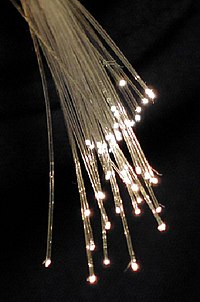
Photo from wikipedia
The elastoplastic behaviors of a nickel-based single crystal superalloy at 760 °C, 927 °C and 1100 °C were studied, respectively, after 815 °C/250 MPa lasting for 2000 h, 927 °C/205 MPa lasting for 2000 h and 1100 °C/30 MPa lasting for… Click to show full abstract
The elastoplastic behaviors of a nickel-based single crystal superalloy at 760 °C, 927 °C and 1100 °C were studied, respectively, after 815 °C/250 MPa lasting for 2000 h, 927 °C/205 MPa lasting for 2000 h and 1100 °C/30 MPa lasting for 1000 h. After 815 °C/250 MPa lasting for 2000 h, the $\gamma '$ phases still maintain the cubic shape, but their size increases compared with the original microstructure. The values of $\sigma _{\mathrm{b}}$ , $\sigma _{0.2}$ , $\delta _{5}$ and $\psi $ increase. The tensile fracture surface is 45° with the [001] direction and the fracture mechanism is octahedral slip. After 927 °C/205 MPa lasting for 2000 h and 1100 °C/30 MPa for 1000 h, N-type plate-like rafting structure formed, and the latter owns a higher degree. The values of $\sigma _{\mathrm{b}}$ and $\sigma _{0.2}$ decrease obviously, while $\delta _{5}$ and $\psi $ basically are unchanged. The mechanism is the mixed fracture of octahedral slip and I-type. The fatigue verification test and simulation further prove the strengthening effect.
Journal Title: Mechanics of Time-dependent Materials
Year Published: 2021
Link to full text (if available)
Share on Social Media: Sign Up to like & get
recommendations!